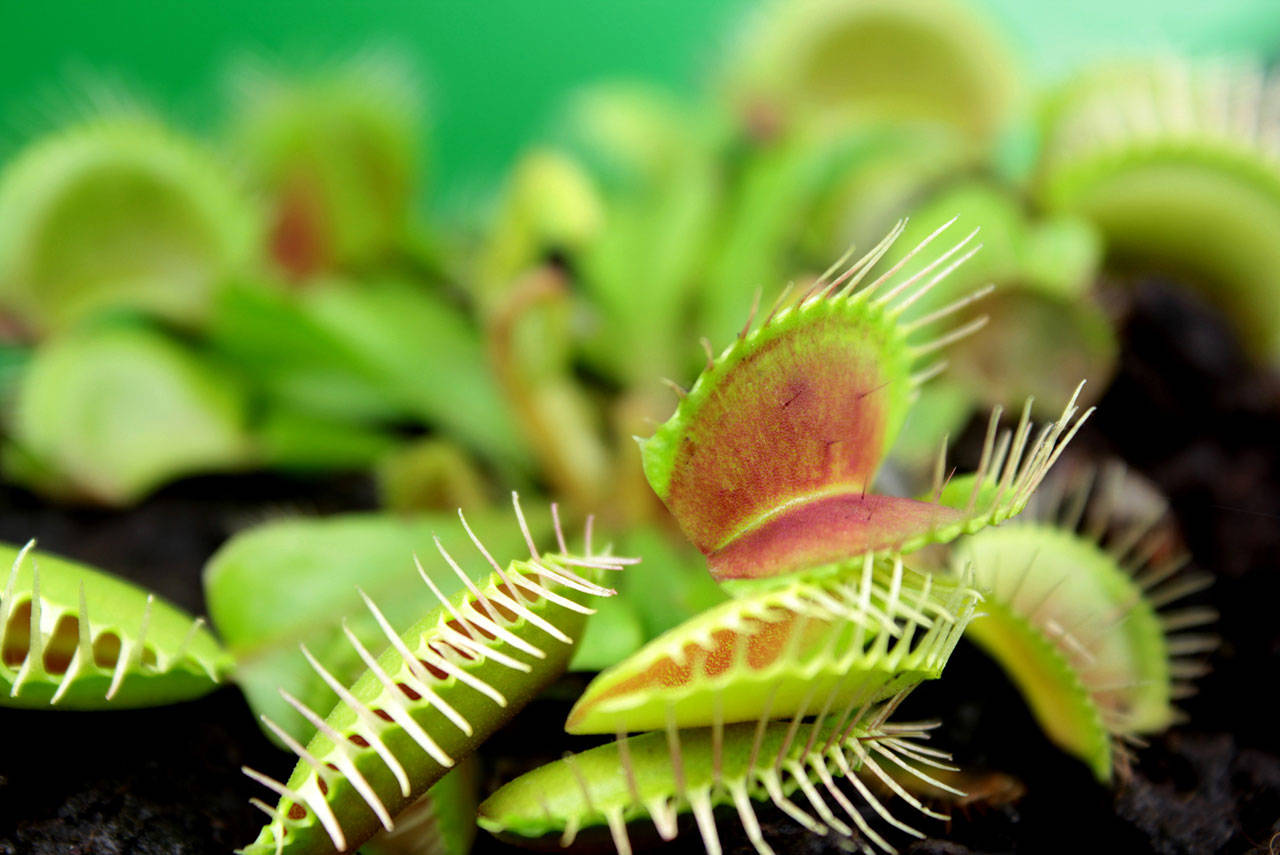Of all of the wonderfully exotic species of plants on this globe we call home, carnivorous bog plants have got to be high on the list when it comes to weirdness.
They absolutely look like they belong on some alien planet, despite the fact that many of them are actually native to the Pacific Northwest. While they certainly don’t have the stature or impact of a 150-foot-tall redwood or red cedar, they have carved out a niche for themselves in our ecosystems where they are quite happy and thriving.
Incredible as it might sound, with a few modifications, we can actually grow these jewels successfully in our gardens, or at the bare minimum, in containers for our viewing pleasure.
Of the four main varieties of CBPs — that’s short hand for carnivorous bog plants — pitcher plants, cobra lilies, sundews and Venus flytraps are the most domesticated and hybridized of the lot.
In Stanwood is a fellow “hortaholic” named Jerry Addington, the owner of Courting Frogs Nursery, who was smitten by these plants several years ago after getting burned out from growing every conceivable variation and mutation of hens and chicks succulents. (Jerry never does anything halfway.)
Turning his greenhouse from an arid environment into a humid microclimate, Jerry then let his passions run wild. He painstakingly, with a small paint brush, made cross after cross of varieties, harvesting and sowing the seeds, selecting and transplanting the progeny, and then waiting, often for several years, to see the results of his breeding.
I have made several trips up to Courting Frogs Nursery and am always in awe of Jerry’s patience and perseverance. Courting Frogs Nursery and Jerry himself have become internationally recognized in the world of CBPs and is the wholesale supplier for our nursery. (You really need to visit his website and read Jerry’s story; it is a delightful piece of composition.)
As for establishing CBPs in our landscapes, they grow best in wet, acidic soils with full sun and don’t need to be fed — that’s what the bugs are for. All that is required is a hole in the ground that retains moisture, which can be accomplished by either installing a pond liner or submerging a bathtub or plastic garden pool.
Drill a few ¼-inch holes in the bottom or sides to allow excess water to drain out. The perfect soil for these plants is a blend of peat moss and sand or perlite or pumice, in a ratio of about two parts peat to one part sand. Soak the mixture down really well before you plant and monitor the water level. It helps to bury an empty nursery pot (the top of the pot at surface level) so you can see the water in the pot deplete, helping you determine when it is time to add water.
A small bog garden can be a real conversation piece and, as an added bonus, these plants will help control unwanted insects like flies and mosquitoes.
If, however, the thought of digging up your yard to accommodate their special needs is more than you can deal with, you can also enjoy CBPs by planting them in a container that retains lots of moisture. Simply keep them well watered and enjoy. It’s that simple.
Stay safe and keep on gardening!
Steve Smith is the owner of Sunnyside Nursery in Marysville and can be reached at sunnysidenursery@msn.com.
Sunnyside Nursery’s free gardening classes are online for now. A “Thrillers, Fillers and Spillers” class is scheduled for 10 a.m. May 22, followed by a “Cascading Color” class at 11 a.m. May 23 via Zoom. With registration, you’ll receive a Zoom link to attend the online class. For more information or to sign up, visit www.sunnysidenursery.net/classes.
Also: The nursery, at 3915 Sunnyside Blvd., Marysville, is hosting in-house events that coordinate with the above classes. Free Container Planting Day is 10 a.m. to 4 p.m. on May 22 and Free Hanging Basket Planting Day is 11 a.m. to 4 p.m. on May 23. Go to www.sunnysidenursery.net/events for more information.
Talk to us
> Give us your news tips.
> Send us a letter to the editor.
> More Herald contact information.

























